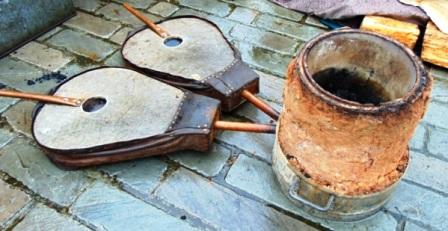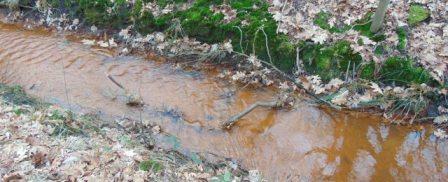The earth's crust consists of about 5% iron, usually as the mineral hematite: iron (III) oxide (Fe2O3). From this pure iron is made by reduction of the ore at high temperature with carbon. In almost all parts of the world there are iron mines.

Bog iron ore is formed in stream valleys and swamps. In ancient times this was a valuable ore, nowadays it is no longer used.
The Batavians used ‘oer’, large chunks of rubble stone and rattle stone. They were beaten to powder, burnt, washed and sieved. Then placed in an oven with charcoal. This bloomery (or shaft furnace) is a clay pipe, a chimney with bellows under.
On the Doorn North site in Ninove (Belgium) traces of Roman iron production from the second century AD were found.

Many of the ponds in the pond area Central Limburg (be) have emerged as a result of (peat extraction and) the mining of iron ore ( up to the 20th century: World War I, Oostham to 1950). The rust color of the surface water betrayed the impermeable ferruginous sandstone at depths of 30 to 150 cm. Also along the (Old) IJssel (nl) since ancient times iron ore and rattle stone has been around, was mined and processed.
